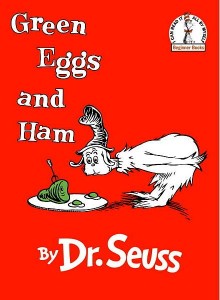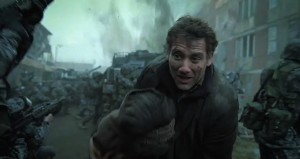Archive for category Television
General musings and updates
Posted by kjohnson1585 in Television, Uncategorized, Writing on June 21, 2010
I’ve been strangely eager to blog recently now that I’ve gotten back into the swing of things, but I’ve been having some trouble deciding what to write about. I actually have a number of ideas I’m dying to work on – the next Childhood Revisited review, an analysis on the misconception of “animation for adults,” a fun feature called “Did We Miss Out?”, where I review a short lived animated show and posit whether it was destined for greatness or mercifully killed – but that requires a bit of research and careful writing. So I thought I’d just update this with a general state of me-ness.
I’m currently living in New Jersey and working for an editorial company in New York. I’m working on a fan fiction comic (which is fairly irrelevant unless you’re into this kind of thing) and producing a cartoon. Of all the things that I’ve done in the past – directing, playwriting, acting… um, HTML coding – working on these projects are the most satisfying things I’ve done in a while. I don’t regret for a moment spending the money I have towards these goals, and despite the fact I’ve been organizing online meetings, discussing script changes and comic layout and model sheets, settling disputes and so on, I have to be honest that I love every single minute of it.
I am a member of the Creative Screenwriting mailing list, which is technically monthly but is more of a “whenever we can” release, and the recent newsletter was pretty much the final revelation that I’m getting (or trying to get) on the right track. With writing trickier and trickier to get read, published, sold, and even a sideway glance, DIY (Do-It-Yourself) methods are pretty much the best way to get noticed nowadays. In effect, people can “see” your writing without having to “read” it. It’s eye-catching, it allows you to generate numbers, it gets you reviews, even amateur ones, allowing you to tweak, or not-tweak, your work, your scripts, and your style.
I don’t want to seem like I’m “that guy,” some ranting fiend totally against the established industry of Hollywood, publishing companies, or agencies. I do think, however, that with so many means and opportunities for aspiring artists to showcase their work outside the typical means that the established means are… well, while I wouldn’t use the word outdated, I would say that the complexities and headaches behind it all seem superfluous nowadays.
Not to say that doing the said work independently is all lilacs and waterlilies. The toughest part is finances. I’m lucky that I’m fairly good with my own, which allows me to finance both projects as well as keep paying the bills. A good chuck of that is timing. The various delays that are going on with the projects are actually helping me instead of hurting me, allowing to plan further and further ahead. Patience is key. If I start rushing things, it’ll all fall apart.
I had advertised a while back about Rocko’s Modern Life creator Joe Murray’s attempt to create a online network for cartoons, and I am happy to say that he succeeded. Success in life is about opportunities, and taking advantage of them when they come, so, yes: I will be pitching the cartoon to said network (dubbed KaboingTV). I want have a ton of pitch materials and animatics ready to go. I want to come in strong, ready, knowledgeable, and confident, with a good sense of what people think of the show, what’s going to happen, and so on.
My next post will be either the Childhood Revisited feature, the “Did We Miss Out?” one, or, even more excitingly, the finished model sheets of the main characters of the webtoon. The in-production name is Internal Instincts, although some of the feedback suggests it may be too negative, so I was thinking of changing it. The logline is too vague, so that needs work. The original pitch was fine, but there’s a better pitch I’ve been developing that probably works better for the show’s vision. The show’s bible needs editing. The full, actual pilot needs a rewrite. So much to do.
But it’s so rewarding. I’m at a good place right now.
Quick mention: Donate if you can!
Posted by kjohnson1585 in Television, Uncategorized, Writing on May 4, 2010
I wrote about Rocko’s Modern Life and Joe Murray a few weeks ago, and, by coincidence, I managed to find his blog! He’s working on a cartoon, and has a fairly intriguing idea: an online, all-cartoon network called KaboingTV (The real CN actually shows live-action stuff now; no matter how they justify it, it’s still a load of crap). He even read my blog – or at least my entry about free-range animation.
He needs some donations, though, and he’s working on it through Kickstarter. Kickstarter is a platform (I actually suggested it to him) where you pledge a certain amount of money to donate, and you have two results: if he makes his financial goal, you get a reward (based on how much you donate) and the money is withdrawn. If he doesn’t make his goal, you lose nothing. It’s a safe win-win, and I would love to see this come to fruition. Imagine: cartoons made by talented people with little to no restrictions about content or language. Could be great!
Check out his video about his idea and his newest ‘toon, Frog in a Suit, and see if you can throw at least five bucks his way!
The Biggest Problem with the “Video Games as Art” Argument…
Posted by kjohnson1585 in Film, Television, Uncategorized, Video Games, Writing on April 27, 2010
… is the following question: What is art, today?
In February of 2005, Christo and Jeanne-Claude installed and designed over 75 thousand “gates” along a pathway through Central Park, New York. They remained there for only sixteen days before they were removed and dismantled. According to Wikipedia, the showcase was inspired by the Japanese torii gates, which are usually placed along the entrance to Shinto shrines.

In 2007, artist Wendu Gu debuted a massive undertaking, whereby she and her assistants gathered over 430 pounds of human hair, cleaned and braided it, and strung it all over the Baker-Barry Library at Dartmouth College. I was attending this school when this event happened. It sounds gross, but it was sanitary, and nifty, if in the oddest sense.

What is art, today? It is global. It is digital. It is not post-Modern (itself a term impossible to define), but post-post-Modern. It is combination of the past/present, East/West, North/South “division”. It is the binaries, redefined. It is art, not-art, and the very manner in which we experience art.
And it has to be. We’re too far along in this decade, too intelligent, too interconnected to no longer discredit or discount the works of other nations, other people, other genres as art – or art of “class” or “wealth”. I’m reminded of the relatively recent 1970s decision to study the diaries, journals, and writings of the common people to study history – social history, they called it. It was supposed to reinforce traditional views of history, the big-man approach to the field, but instead, it forced several historians to rethink the nature of history. (The freed slaves were thought, for example, to be ‘prone’ towards their lot in life, due to their lack of intelligence. It is now fairly well understood that the freed slaves were very smart, but played “dumb” more or less to protect themselves and their families from the violence that would be unleashed upon them if certain radicals discovered their “smarts.”) (After the Fact, Davidson and Lytle)
The Gates connection to traditional Japanese architecture and Gu’s global hair-collection project are manifestations of the contemporary issues of art as we have to understand it today. We can’t constantly compare the Now to the art of the past – not to say they do not have value, for they do; Shakespeare is certainly art; so is Picasso, Beethoven, Contempt. But under this strict definition and narrow lens, it seems impossible to make art today; all potential venues in some format now is parody, is pastiche, is copy, is simulation, is simulacrum. It’s global, universal, multi-natural and multi-faceted. It’s interaction, interactivity, communication, and the methods in which we do all of that. It’s everything.
Roger Ebert, as per his recent blogpost, would be hard pressed to argue with Gu, Christo and Jeanne-Claude, and Richard Prince that their work is not art. Prince is responsible for “appropriation art,” photographing other people’s photographs. He applied this to the Marlboro Man, which makes for an interesting question: is the Marlboro Man art? If not, is the photograph of it art? If not, why the hell was it hanging in the Guggenheim?
But that is it. Art is more than the aesthetics and the personal, subjective sensation we feel when we experience it (although it is part of it). It is the QUESTIONS that are inevitably derived when we experience art. It expands our thinking, our criticism, our viewpoint of the world around us, from the little, the frivolous, the silly, to the profound, the majestic, the sublime. Is comedy art? Does the fact that Shakespeare’s work may not be attributed to him still make his work artistic? Is the fact that Raphael, being more or less a copycat, mean he is less an artist than Da Vinci? Let’s talk about it. Let’s debate this. Let’s DISCUSS.
The two issues I have with Ebert’s analysis has less to do with his belief and more to do with his methodology and mindset. 1) Not playing a game yet denoting it not art is flawed in the most obvious of ways. 2) Refusing to play a game to judge whether a game is art is every more egregious, especially coming from someone as well-spoken and intelligent as he is. Dr. Seuss taught children this mistake in Green Eggs and Ham.
Had he played a game and denoted it not art – well, that would be something else. That would make for a much more interesting dialogue, one that would be much more coherent and grounded. And that, that would be the beginning of the language of art for video games, of the interactivity and “immersion” of entertainment.
I have, in my hands, TONS of essays about so many elements and facets of film and the media of today that it’s almost sad. (Thanks, Dartmouth!) I have: “An Aesthetic of Astonishment: Early Film and the (In)Credulous Spectator” by Tom Gunning (an essay showcasing early films as thrill rides than mistaken assaults on the audience); “How Films Mean” by Geoffrey, Nowell-Smith (a dialogue on how to “read” film); “Anal Rope” by D. A. Miller (a queer theorist reading of Hitchcock’s Rope). Linda Williams focuses SOLELY on the audience’s pre-expectation of the film Psycho, on how it reinvented the ad campaign and the visual/visceral reaction of said audience in “Discipline and fun: Psycho and postmodern cinema.” I could go on; in my studies, I’ve read over a hundred different essays that served to deal with, in some format, of film, cinema, television, the “new media,” and post-Modernism (whatever that means). Ebert has a bigger fight, in reality, than the mere fourteen year-old boys that seek mere legitimacy in their past hobby.
Is all of this art? Who knows? That’s why we want to discuss it. Detail and compare, cite and suggest, argue and debate. We like to. We WANT to. It will make the field better, stronger, smarter. WE want to be better, stronger, smarter. Art itself is not art until we not only experience it, but understand and learn about that experience beyond the primary encounter. If the works by Wassily Kandinsky are art, and the animated films by Oskar Fischinger are art, then Rez, the game, has to be art; three different mediums (painting, cinema, video games) seeking to “connect” the elements of sound, shape, color, motion, and how we perceive it all (Cracked made this argument, in comical but cohesive fashion). To deny one form is to inherently deny them all. But beyond that, the real question is: why deny one at all? Why does, let’s say, the interaction of the color/sound/shape aesthetic stop being art within the realm of interactivity? THAT’S what should be discussed, and with people as well-versed as Ebert flat-out denying a medium as even worthy of discussion — well, that is exceedingly disappointing.
Discussing the aesthetics of what art is within the 21th century is worthwhile, mainly because it needs to be discussed. My former professor at Dartmouth (Mark Williams, if you wish to look him up) has always found meaning and value with how we percent the nature of what is real and reality, using films like The Matrix (outside the fighting sequences) and books by William Gibson. The “computerized” aesthetic – green artificiality, vague connections via social/virtual interaction, digitalization and interactivity – has to be something. If not art, then what? What exactly are we experiencing?
If the nature of interactivity itself is the problem, and the “thrills” incited by the player that plays belittles the chance for gaming to be art, I offer one film as an argument to this: Children of Men.
Children of Men is a perfect case study that should push the dialogue towards gaming as art. Clive Owen’s character, especially towards the latter half of the movie, is pushed and driven forward in an insane world of “enemies and chaos” around them. With the camera as a seamless tracking shot, save for the occasional moment for dialogue and plot revelation, that visceral thrill one feels is probably the closest feeling one gets when playing a video game. Perhaps the film, overall, is not art, but there’s a real artistic vibe to how well the camera and cinematography was ingrained within the film and the flow of the story. Quite frankly, the sole difference between game and film is the ability to control Clive’s character. (The introduction to Half-Life 2 reeks of Children of Men sensibilities [or vice versa]).
The “game” metaphor when it comes to the critiques of films is that the movie is very staged and structured, like a level-to-level game, moving from one action set piece to the next. What filmmakers and critics alike fail to realize is that the in-the-moment, immersive thrill is what makes a game truly a game, since most of them place the player against what seems to be an insurmountable number of places, people, or things. Game-based movies certainly don’t count, and while films like Gamer skirt the idea of player interactivity, I doubt they attempt to question it, among the plentiful explosions (an aside: the image of the gamer have become so cliche that it is bordering on frustrating. Gamer’s geeky kid protagonist seems annoying while Roger’s first image on his blogpost is embarrassing, made more so by his constant replies that “it’s cute,” which only serves his overall, diminutive dismissal even more. And I refrain from the pathetic portrayals of the “game” and the “gamer” on screen. But I digress.)
There is no desire to be pretentious here, nor am I seeking to “legitimize” gaming in anyway. Hell, I don’t care, really – I play my games knowing full well the ridiculous scenarios are geared towards explosions, gun fights, and ass-kicking. The issue is that the layers of this interaction – just as the various layers of how we interact with literature, paintings, theater, film, comics, and other art forms – is what is at stake. At the very least, just as the artists above made art of the Now now, we need to debate and discuss what constitute the Art of today, in ALL forms, from all places.
Let criticism thrive in this century at all levels of our representative experiences.




